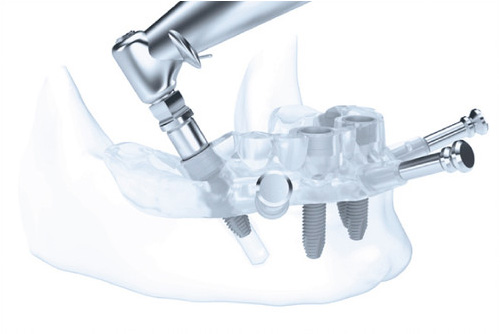What is a surgical guide?

The placement of dental implants can be done without or with the help of a surgical guide. The surgical guide will help the practitioner during the placement of the implants.
To do this, the surgeon must first perform a 3D surgical planning by taking a CT scan and an optical impression of your teeth or a pre-existing prosthesis.
With the help of a computer program, the practitioner will be able to choose the type of dental implant (diameter and length) and determine the exact position in which he or she wishes to place the implant or implants.
Once these elements have been chosen, the surgeon will be able to 3D print a surgical guide that will be used on the day of the operation.
Today, there are three types of surgical guides:
What are the benefits of guided surgery?